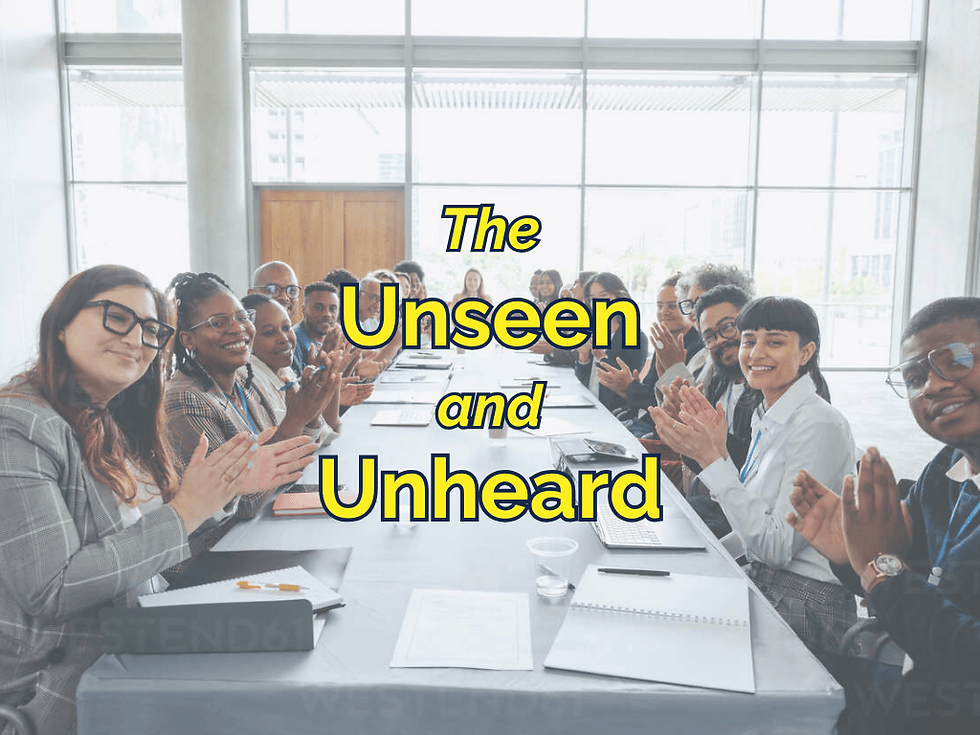How Senior Management Sidestepping Unintended Consequences Impacts Your Presentation
- JD Solomon

- Mar 29, 2022
- 4 min read
Updated: Dec 12, 2022

Why senior management desires to "do no harm" is critically important. Understanding the answer will make your technical presentations more effective. Understanding why decision makers have a hard time making strategic decisions will keep you from potentially being fired as a trusted advisor.
Animal House
Academics and researchers cite several dozen reasons why we have a hard time making strategic decisions. I think it comes down to just two things. And both constantly pull at our decision makers, just like in the movie Animal House where a devil and an angel, both played by the late actor John Belushi, argue on the opposite shoulders of a decision maker.
Climbing the Ladder
Most senior managers spend years climbing through the operational ranks. In the operational ranks, many transactional decisions are required each day. This is the realm of System 1 thinking, where only small amounts of time can be afforded for any one decision. Rules of thumb are staples of the decision-making process.
Strategic decision making becomes the dominant paradigm when a mid-level professional elevates into an executive role. Here, a single decision may take weeks or months to make. It is the world of System 2 thinking, where complexity and uncertainty are the norms. The stakes are high. Structured processes, analytical tools to convert more data to better information, and cross-functional teams are needed which require both time and discipline.
Most new executives struggle with the role transition from operational to strategic decision maker. Many executives never do. Years of conditioning create a false value perception that only rapid-fire decision making is accomplishing something. And, in turn, there is personal relief to have done the job and put the decision behind us.
“Ready-shoot-aim” is the devil on the right shoulder.
The Kind Executive
Behavioral scientists tell us that, at our core, nearly all humans do not want to harm other humans. Or at least not get blamed for it. Our daily lives are full of the “kind executive”, the “benevolent volunteer”, or the “good friend”. In fact, most of us work hard to avoid the feelings of guilt associated with the impacts of a bad decision on ourselves or those around us.
Regret: Action or Inaction?
The classic example I most often cite is from Daniel Kahneman and Amos Tversky. It basically describes two investors, Paul and George. Paul owns shares in Company A. During the past year, he considered switching to stock in Company B, but he decided against it. He now learns that he would have been better off by $1,200 if he had switched to stock in Company B. George owns shares in Company B. During the past year, he switched those shares to shares in Company A. He now learns that he would have been better off by $1,200 if he had kept his stock in Company B.
The question that Kahneman and Tversky posed in their research is “Who feels greater regret?” The responses were overwhelming with 92% of participants responding 'George' (who acted) and only 8% responding 'Paul' (who did nothing). Research of this type has been performed in numerous forms and by numerous people but the conclusions are all the same. As humans, we prefer inaction to action if the action ultimately creates pain for another human being or to ourselves. We somehow feel less responsibility and less guilt by our inaction.
The trouble with strategic decisions is that they are game-changers – both in the short term and in the long term. Complexity and uncertainty dominate. People, businesses, and the environment experience harm when low-quality strategic decisions generate bad results.
Do No Harm
The desire to “do no harm” often leads senior management to avoid committing to action. However, at some point, the strategic decision will be made. As a trusted advisor, be ready for the blame game if the results have a negative impact.
“Do no harm” is the devil on the left shoulder.
So where does this leave strategic decision makers? For one, it underscores the need for a defined process when making strategic decisions. Equally important is establishing the structure and disciple to follow the process and do everything in the proper time and order. And third, our goal should be to make quality decisions rather than being overwhelmed by the potential for bad results.
Moving Forward
So where does this leave technical professionals as trusted advisors? Simply put, our decision makers at some point are ready to pull the trigger, and at the same time, if their strategic decision has unintended consequences they will look to pass the blame.
Strategic decisions involve much more than technical aspects. Understanding and being able to effectively communicate the "push and pull" that motivates senior management is important to get them to a decision. Understanding the continuum is critically important to succeeding in our role and perhaps one day avoiding losing it.
The illustration “Do No Harm” and excerpts from this article are taken from JD Solomon's book, “Communicating Reliability, Risk and Resiliency to Decision Makers: How to Get Your Boss’s Boss to Understand.” The second edition is now available on Amazon.com. Sign-up for updates at Communicating with FINESSE.




Comments